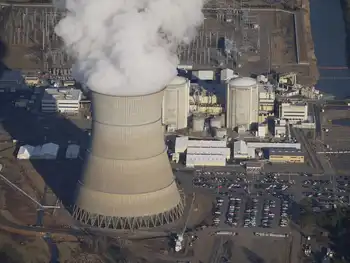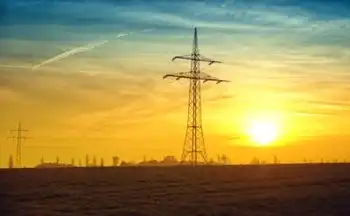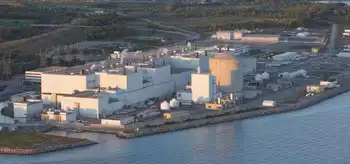Retailers invest in energy saving buildings
By New York Times
Electrical Testing & Commissioning of Power Systems
Our customized live online or in‑person group training can be delivered to your staff at your location.

- Live Online
- 12 hours Instructor-led
- Group Training Available
Across the country, a race is under way among stores and fast-food restaurants to build environmentally friendly outlets, as a way to curry favor with consumers and to lower operating costs. Most chains are focusing on prototypes at the moment, but the trend could eventually change the look and function of thousands of stores.
One of the latest participants is McDonaldÂ’s, which recently opened a revamped restaurant in a gritty industrial area on the South Side of Chicago, across from a food manufacturing plant and next to the Swap-O-Rama flea market.
The newly rebuilt restaurant is crammed with energy- and water-saving gadgets as varied as high-efficiency appliances, pavement that filters rainwater, and tables and chairs made out of recycled material. It even has a garden on the roof.
The green building boom is partly being driven by retailersÂ’ desire to capture the attention of consumers who have become fascinated by hybrid cars, energy-saving light bulbs and wind turbines.
But more important for the companies, it is a way to shave long-term operating costs at stores and restaurants, which consume copious amounts of energy and water for ovens and fryers, heaters and air conditioners, sinks and toilets.
McDonaldÂ’s, for instance, plans to take the most successful aspects of its Chicago restaurant and replicate them at new outlets across the country.
“You get energy savings, and you can tell customers you are greener. That’s a win-win,” said Neil Z. Stern, a retail consultant for McMillanDoolittle in Chicago.
While customers may like the idea of green buildings, Mr. Stern said he was skeptical that it would lure them into stores. “Ultimately, the reason you do it is it’s a better way to run your business,” he said.
Subway unveiled its first “eco-store” last year in Florida and has opened four more. Target, Office Depot and Staples have opened green stores, and Best Buy has announced plans to do the same.
A few chains are even further along. Recently, Kohl’s opened 45 stores that were built using recycled materials, water-saving plumbing fixtures and on-site recycling. Wal-Mart, meanwhile, has taken the most successful techniques from prototype stores and incorporated them into all new stores, and it continues to experiment with “high-efficiency” stores that save 20 to 45 percent in energy costs when compared with more traditional stores.
While the “green” moniker is ill-defined and vulnerable to exaggeration, many of the chains, including McDonald’s, are seeking certification from the United States Green Building Council, a nonprofit agency in Washington whose rating system is a widely accepted standard.
Called LEED certification, for Leadership in Energy and Environmental Design, it provides a rating for buildings based on human and environmental health, sustainable site development, water savings, energy efficiency, materials selection and indoor environmental quality.
Under a new program, McDonaldÂ’s hopes to obtain certification for its prototype and then build many more restaurants based on that template, without going through the paperwork and expense of certifying each restaurant.
LEED certification, though, is not without detractors, some of whom complain about the cost and inconvenience. Michael Gordon, one of the founders of Pizza Fusion, a Florida chain that has several green restaurants and boasts of its environmental ethos, said a 2,000-square-foot restaurant paid the same certification fees as one five times as large.
Some others say they are uncomfortable with companies promoting their buildings as green.
“There’s no such thing as a green building with a full parking lot,” said Seth Kaplan, vice president for climate advocacy at the Conservation Law Foundation. “That’s just an unavoidable truth.”
Marion Nestle, a professor of nutrition at New York University and a frequent critic of fast-food chains, said the green buildings were laudable but were ultimately intended to make people feel better about eating unhealthful food.
“Takes your mind off the calories, doesn’t it?” she wrote in an e-mail message. Ms. Nestle added in an interview, “I think it’s fabulous that they are doing it, and McDonald’s always has a tremendous impact. But it’s still making junk food.”
The financial and credit crisis could do more to slow construction of green buildings than any public criticism. For now, though, retailers say building LEED-certified buildings make economic sense, particularly with energy prices becoming so unpredictable.
At Wal-Mart, for instance, all new stores have highly efficient lights, skylights and improved heating, cooling and refrigeration systems. The floors of the stores are not covered but instead are exposed concrete slabs made with recycled steel and fly ash, a waste product. The high-efficiency prototype stores are equipped with even more efficient heating and cooling systems; a store in Las Vegas, for instance, is expected to save 45 percent in energy costs over traditional stores.
Charles Zimmerman, vice president for prototypical design-construction standards at Wal-Mart, said his company was experimenting to determine which technologies provided the most energy savings, because energy was the companyÂ’s second-biggest operating expense, after personnel. For instance, the company found that large wind turbines did not make sense at its stores.
Peter DiPasqua, a Subway franchisee with 89 stores in central Florida, said he originally thought his green store in Kissimmee was largely a “feel-good thing.” But he said as construction progressed, he became more impressed with the benefits of LEED-certified construction.
The store cost about 20 percent more to build, Mr. DiPasqua said. But he said he was saving 20 percent a month on electricity even though the store, in a prime location, is selling 43 percent more than a store down the street.
“I underestimated it all,” he said. “What’s amazing is 43 percent more bakes in the oven, and doors opening and toilets flushing. And to have 20 percent less energy consumption?”
The revamped McDonaldÂ’s in Chicago is not the companyÂ’s first green building. There is one in Sweden, another in Brazil and yet another in Savannah, Ga., which was built as part of a larger LEED-certified development. Several are under construction in Brazil, Canada and Costa Rica.
But the Chicago restaurant is one of the most advanced. Opened in August, it was built specifically to test assorted technologies. The restaurant is wired with sensors to determine how much energy the lights use and how much water is flushed by each urinal.
“If we are going to go to an operator and try to sell this, we need to know the bottom line,” said John Rockwell, lead quality manager of restaurant design for McDonald’s in the United States. “That’s the first question they’ll ask.”
He explained that McDonaldÂ’s had chosen Chicago for the green restaurant because the city had a program that expedited the permitting process for LEED-certified buildings. The building cost more than a typical restaurant, he said, but would not be more specific.
During a tour, Mr. Rockwell explained that permeable pavement slows and cleans rainwater that might normally pollute city waterways. A cistern buried behind the restaurant also collects rainwater, which is used to water the landscaping. The roof garden helps insulate the restaurant.
The store is lighted with skylights and energy-saving fixtures containing light-emitting diodes. Because air quality is an important LEED criterion, McDonaldÂ’s used paints and resins that do not emit chemical odors, and less-toxic cleaners are used to spruce up floors and tables. The store even has a special mat at the entrance to knock dust and particles from shoes and keep dust from wafting through the air.
Mr. Rockwell was particularly enthusiastic about the low-flow toilets and urinals, which use even less water than the standard low-flow variety, without the usual clogging — quite a feat at a busy restaurant. “We are saving significant water doing that,” he said.











